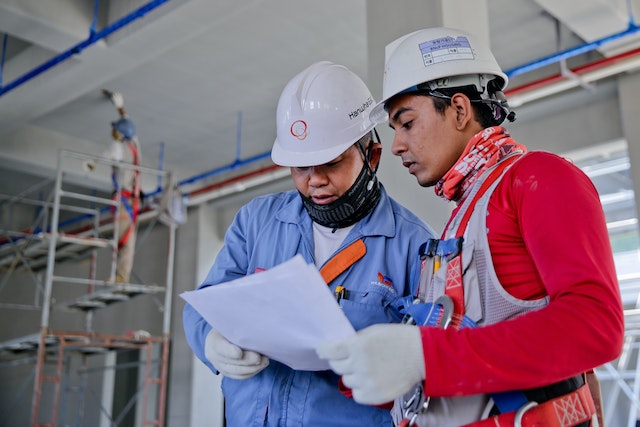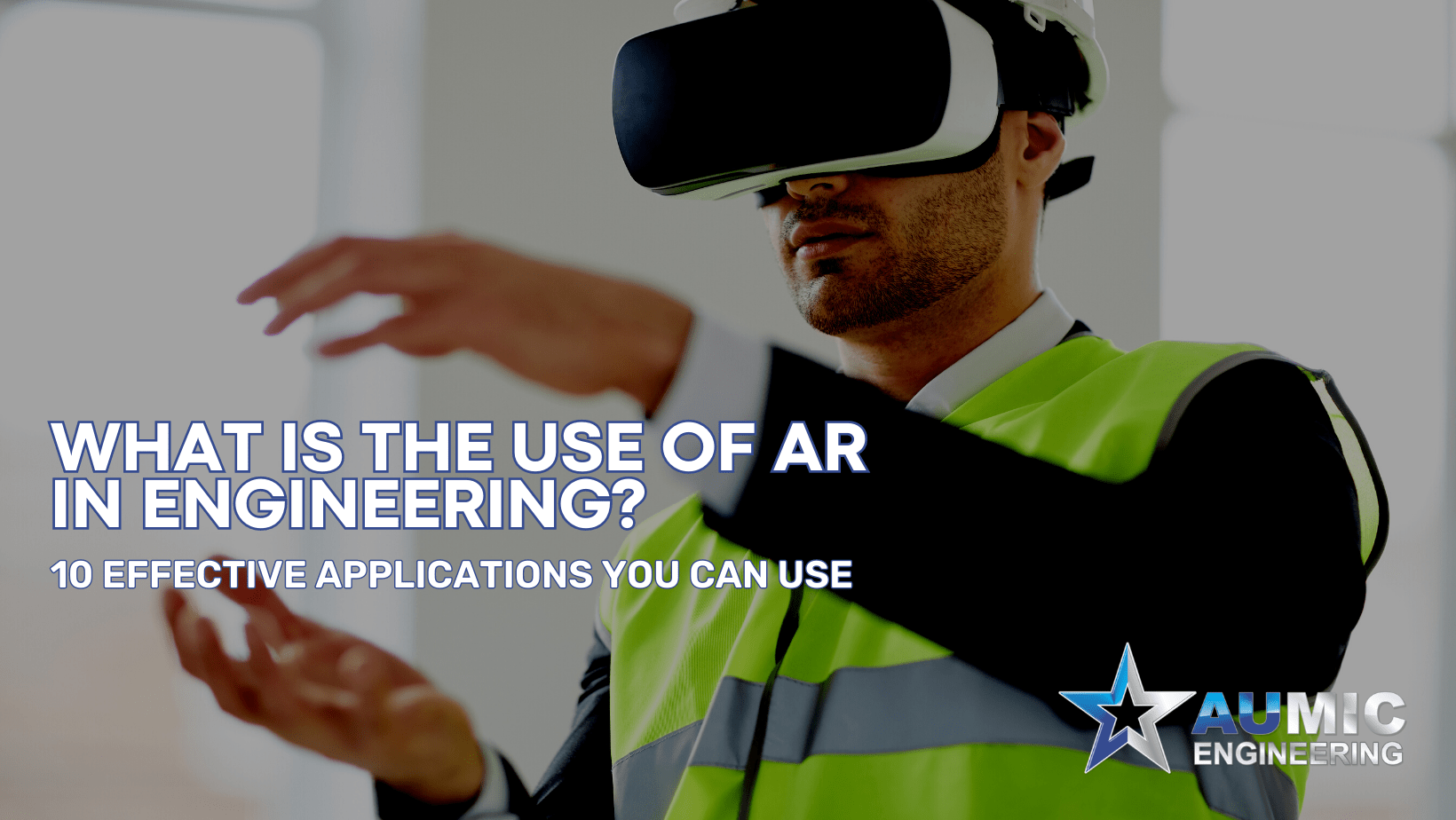The revolutionary technology we know as augmented reality (AR) is revolutionising the way we interact with our environment and is quickly acquiring traction in different industries.
AR provides a rich, interactive experience by superimposing digital data onto the physical world. What is the use of AR in engineering? It is now a potent tool in engineering, changing conventional methods and opening up new areas for creativity.
In this post, we are delving into the fascinating world of augmented reality in engineering and examining its different uses. The field of engineering is changing as a result of augmented reality, from remote support and collaborative problem-solving to virtual design and prototyping.
At Aumic Engineering, we have an innovative approach using augmented reality (AR), that proves the enormous impact this technology has on improving engineering processes.
Come with us to take a closer look.
What Is The Use Of AR In Engineering?
We shall explore augmented reality’s (AR) different engineering-related applications in the sections that follow.
We will examine how augmented reality is altering conventional engineering practices and advancing the industry, from virtual design and prototyping to remote support and cooperative problem-solving.
Join us as we explore the engineering industry’s transformational potential for augmented reality and highlight how Aumic Engineering is using this technology to spur innovation and streamline its operations.

1. Virtual Design And Prototyping
What is the use of AR in engineering? It allows engineers to view and alter 3D models in real-time, and augmented reality (AR) revolutionising the design and prototype process in engineering.
Augmented reality simplifies the process of design iteration and permits quick adjustments and evaluations. Additionally, AR fosters better engineering teamwork by enabling real-time shared experiences and communication among engineers.
Aumic Engineering and other business titans are using AR to achieve new heights of efficiency and innovation in virtual design and prototyping.
2. Maintenance And Repair
By offering in-the-moment visual advice and superimposing digital data on the actual equipment, augmented reality (AR) revolutionises maintenance and repair in engineering.
What is the use of AR in engineering?
Step-by-step instructions and data overlays are accessible to engineers, enhancing task efficiency and accuracy.
AR speeds up the repair process by locating defective parts and giving real-time feedback. Aumic Engineering and other pioneers in the field use AR to improve operational efficiency overall, optimise maintenance, and cut downtime.

3. Training And Education
By mimicking real-world events and boosting learning opportunities, augmented reality (AR) revolutionises engineering education and training.
What is the use of AR in engineering? To acquire practical skills without using physical setups, trainees interact in lifelike virtual settings.
There is no gap between theory and application with interactive AR modules, which make learning interesting and memorable. Aumic Engineering uses AR as well as educational institutions to prepare skilled engineers for practical problems.
4. Construction And Visualisation
What is the use of AR in engineering and construction? It aids in visualising building designs, enhancing project management, and overlaying digital information on sites, augmented reality (AR) improves the construction industry.
Before work starts, engineers can analyse real-time data, spot conflicts, and make modifications. In construction projects, AR improves communication, lowers error rates, and increases project effectiveness.
5. Remote Assistance And Collaboration
What is the use of AR in engineering? It is extremely useful for remote help and teamwork.
Remote experts can virtually collaborate and give on-site engineers real-time direction: AR enables remote specialists to assist with on-site engineering activities.
On-site engineers can share their live perspective with experts via AR devices, and the experts can then digitally annotate, instruct, and guide the real-world environment. This makes it possible for remote experts to assist on-site engineers, even from a distance, hastening the resolution of issues and increasing productivity.
Since experts do not need to physically be there, AR helps to reduce travel expenses and time. The experts’ prompt assessment and resolution of problems without needing travel arrangements also speed up reaction times.
Related Article: 7 Game-Changing Intelligent Building Solutions & Modern Infrastructure Tech.

6. Safety And Risk Assessment
AR is revolutionising engineering safety and risk assessment. It offers training using AR for risk analysis and safety measures. While interactive safety guidelines enhance safety processes, real-time hazard detection aids engineers in identifying potential risks.
What is the use of AR in engineering? It can help improve workplace safety, reduce accidents, and foster a culture that focuses on safety.
7. Quality Control And Inspection
Engineering quality assurance and inspection are revolutionised by AR. To ensure accurate and consistent evaluations, engineers use augmented overlays with AR-guided inspections.
Accuracy is improved by promptly identifying flaws and irregularities by superimposing digital information. By giving real-time direction and feedback and improving inspection operations, augmented reality (AR) increases efficiency.
To improve productivity, maintain excellent product quality, and optimise quality control, Aumic Engineering and other industry leaders use AR.
8. Data Visualisation And Analytics
What is the use of AR in engineering?
By visualising complex data and facilitating real-time monitoring and analysis, AR revolutionises data visualisation and analytics in engineering. By superimposing digital data over the physical world, engineers can better understand it and gain insightful knowledge.
Engineers can make proactive decisions thanks to real-time data visualisation, which enables them to swiftly spot patterns and trends. AR enables data-driven strategies, optimising engineering procedures and results.
Aumic Engineering and other pioneers in the field use AR to maximise the value of engineering data and improve decision-making.

9. Augmented Workstations And Tools
We are transforming engineering workstations and equipment with AR by increasing productivity and lowering errors. Workstations with augmented reality integration give engineers access to real-time data and instructions.
AR adds instructions to tools and equipment, streamlining productivity and lowering human mistake rates.
10. Amazing Customer Experience
What is the use of AR in engineering when it comes to improving customer experience?
Here is how augmented reality is altering client interactions:
- Demos and showcases of augmented products: What is the use of AR in engineering? It helps engineers present present features, functionality, and design elements in an interactive and immersive way by superimposing digital information onto real items. Customers can dynamically and engagingly visualise and experience products, which results in a deeper understanding and appreciation of the engineering advances.
- Customisation and real-world environment visualisation of items: Customers can customise product configurations and see how they fit in their own area or environment by using AR applications. They can picture the outcome, and confirm that the product satisfies their own requirements and preferences.
- Customer engagement and sales process improvement: What is the use of AR in engineering when it comes to increasing customer engagement and sales process improvement? Firstly, AR captures users’ attention and produces memorable interactions by offering engaging and interactive experiences. Secondly, we can use AR to more efficiently explain technical information, highlight significant features, and respond to consumer inquiries. In the end, this boosts client happiness, boosts sales conversion rates, and gives engineering firms a competitive edge.
What Is The Use Of AR In Engineering Now And Beyond?
The rise of augmented reality as a disruptive technology that is transforming different aspects of the engineering industry is apparent. In a range of industries, such as virtual design and prototyping, remote assistance, data visualisation, and consumer experiences, augmented reality is altering traditional practises and creating new chances for innovation. Customer involvement, teamwork, safety, and efficiency are all significantly improving.
Augmented reality has a wide range of applications in engineering, enabling engineers to visualise and edit 3D models, improve overall quality control processes, improve inspection accuracy, and streamline workflows. Augmented reality engineering practices are boosting output, cutting down on errors, and enhancing decision-making.
There is a growing demand for more research into the application of augmented reality (AR) in engineering as its potential develops. It is essential that engineering professionals, businesses, and educational institutions adopt AR and make use of its disruptive potential. What is the use of AR in engineering? By integrating AR, the engineering sector can achieve new heights of creativity, effectiveness, and collaboration, advancing the sector and sparking innovation.
We encourage you to embrace this technology, investigate its potential, and capitalise on its power to further engineering excellence in the future!
Read More
We Are Part Of The Best Steel Companies In Gauteng, Here’s 6 Reasons Why.

